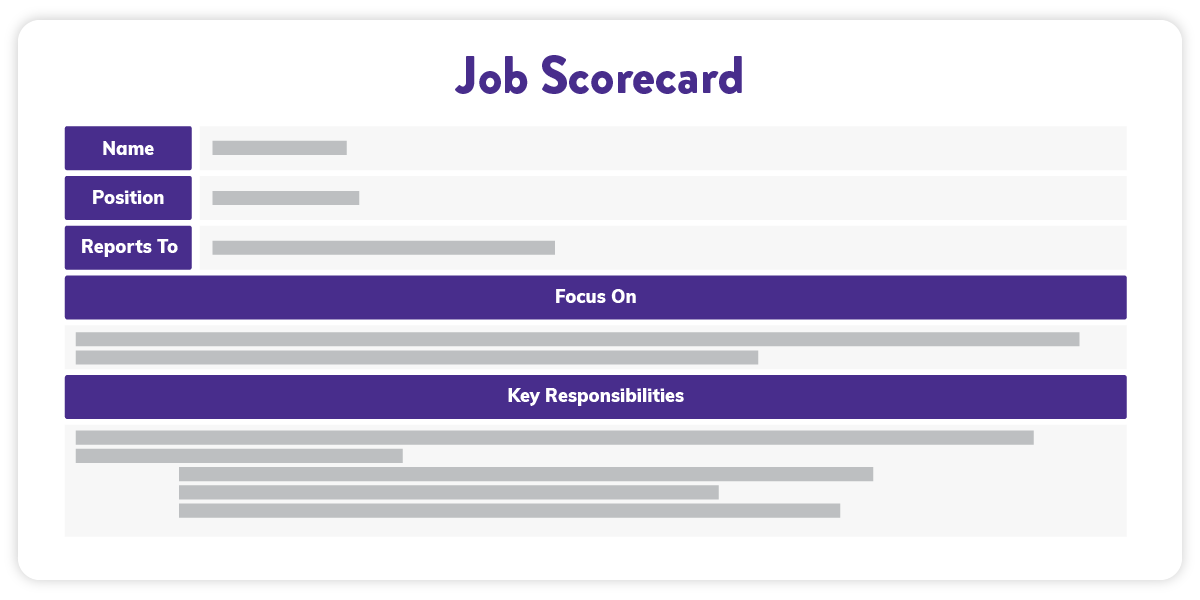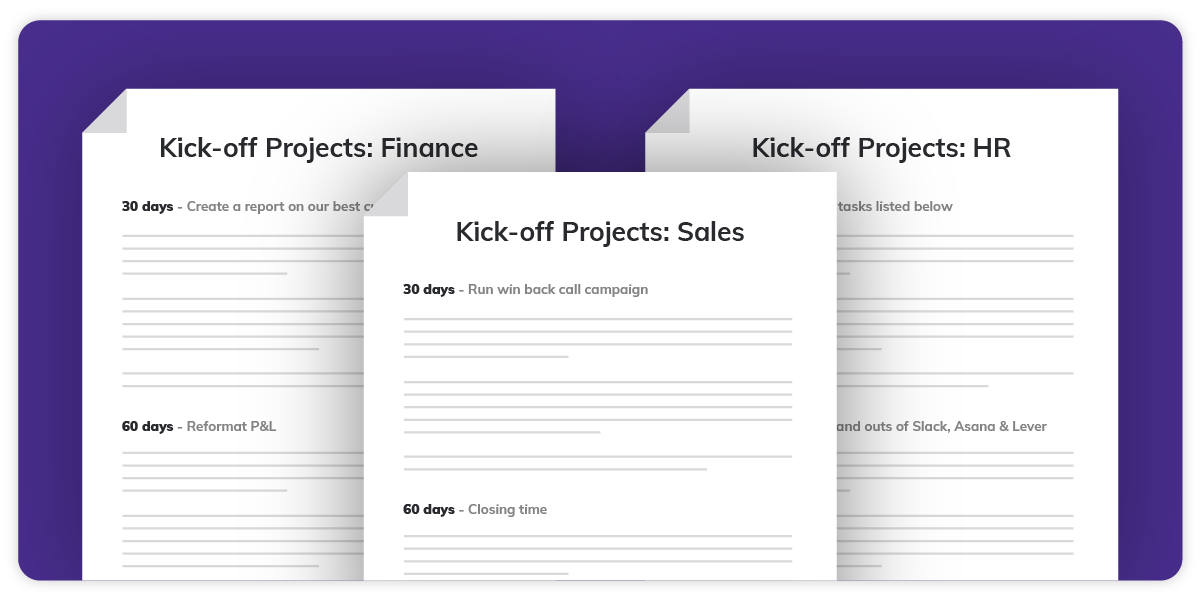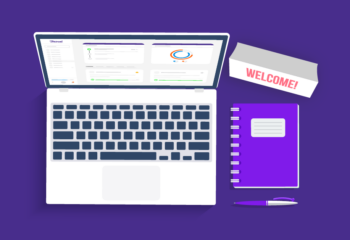
Articles
Employee Orientation: A Need To Know Guide
July 17, 2021

Starting a new job is overwhelming. Your new hires probably feel nervous, a bit out of place, and don’t really know what to expect. And after an employee orientation filled with tons of paperwork and awkward introductions, they’ll likely go home feeling stressed with all the new information.
But when you do orientation for new employees the right way, your new hires won’t feel that way. All because it sets the groundwork for new hires to settle into their role and thrive. And it can influence whether or not they plan to stick around for the long haul.
So, here's everything you need to know about employee orientation (including how to get it right):
What is new hire orientation?
Employee orientation is the process of introducing your new hires to your business. You'll cover basic information like what your business does, who their teammates are, company policies, and employee benefits.
And while everyone needs to go through this one-time event when they start, there's no rule on how long an orientation should last. It all depends on how much you have to go over. But a good rule of thumb is 3 hours minimum and a full workday maximum. No less, no more!
There is, however, a correct time to run the process, and that's right after the hiring process (ideally on the employee's first official day) and before they start onboarding. Because the longer you wait for orientation, the longer it'll be until your new hire is fully productive.
Plus, you'll need to complete all your new hire paperwork (if you haven't already). Like W-4s, non-disclosure agreements, employee handbook acknowledgment, and direct deposit authorization forms.
Ideally, new employees will have this paperwork filled out before their first day (we like using Justworks and HelloSign to get this done remotely). That way, your orientation can focus on making a stellar first impression.
The difference between employee orientation and onboarding
Chances are good that you've heard "orientation" and "onboarding" used interchangeably. And while they're closely related, they're not the same thing - and you need both.

Orientation is the first-day stuff. New hire paperwork, introductions to co-workers, a high-level overview of the company, and a breakdown of company-wide policies included. But it's really just a way to welcome your new employees and ease them into your company culture.
Meanwhile, the onboarding process is a bit more robust.
Onboarding is the act of getting your team members fully up to speed and productive in their new roles. And it includes mandatory training, job shadowing, and more before the person is fully productive.
That's because, unlike orientation which stays high-level, onboarding dives into the nitty-gritty processes and procedures related to their role. And it aligns your new hires on how your company does things so you can hold them accountable.
Plus, onboarding can be done asynchronously (with a training tool like Trainual). That way, there's no need to pull on your management team once orientation is done. New hires go through their training all on their own and at their own speed.
But don't feel like you have to rush through everything. While orientation takes roughly a day, onboarding can take upwards of 3 months before a new hire is fully productive.
👉 Don’t have 3 months? Trainual gets people from “just hired” to fully productive in a fraction of the time. But don’t take our word for it - try it free today.
Why orientation is important for new employees
You want to get your new hires up to speed ASAP. So, employee orientation can seem like a waste of time, and it can be tempting to skip it.
But, if you just throw your new hires into their roles without a warm welcome, they’re going to feel disconnected. And they might even question if they made the right choice by taking the job.
So, orientation not only aligns your new hires to your company’s mission - it also helps them to hit the ground running faster in their roles. Here’s how:

Alleviate any anxiety
Think back to when you started your current role. Chances are good that you showed up feeling a little nervous. And you're not alone. Roughly 80% of professionals admit to feeling anxious on their first day.
So, your orientation allows you to make an incredible first impression. And to really reinforce that yes, you made the right choice, and we're so happy you're here. This will set any nerves your new hires are feeling at ease.
If this stress isn't settled by the time orientation process wraps up, it can keep your new team member from learning their job. Or worse, make them second guess working with you altogether.
But you can avoid this! The key is to make your new hires feel welcomed and valued well before jumping into their job-specific training. So, do something a little special to celebrate their first day (we like to have their coffee order waiting for them). And take time to actually get to know your new teammates as people before diving into your company policies.
Set expectations
Only about 50% of employees know what's expected of them. This leaves the other half of employees scrambling to figure out what they're supposed to be doing.
Sure, they know what their job description says. But that doesn't clearly communicate what that role is responsible for, how to do that job, or how you'll measure success.
So, it's up to you to set expectations. And first day orientation provides a great place to do that - before they get too far! Set aside an hour for all your new hires to meet with their direct manager on their first day. This way, they can align on the role, what they'll be responsible for, and how success will be measured.
This way, there's no need for new hires to guess what they'll be doing. And they're more likely to be engaged from the get-go. Meaning, they'll retain more of their training and contribute more long-term.
Increase retention
Roughly 20% of all turnover happens within the first 45 days of someone's tenure. And it's credited to an awful orientation process and onboarding experience. Meanwhile, companies with a stand-out employee orientation program retain 82% more new hires.
That's because your employee orientation programs provides your new team members the confidence to do their job. They get the answers they need and have clear expectations. So, they're not constantly second-guessing how they're doing and empowers them to contribute to your company in a meaningful way.
Plus, if done right, your orientation introduces your new hires to everyone on their team. That way, they instantly feel like they're really part of the squad (because they are) and not just an outsider sitting in.
This puts new hires on the fast track toward making meaningful connections with coworkers. And when employees feel like they belong, their risk of turnover drops by 50%. (Plus, their job performance improves by 56% - just saying.)
New hire orientation checklist
Most of the work that goes into employee orientation happens upfront. So, here’s a checklist of everything you’ll need ready on your new hire’s first day:

Paperwork
Before your new hires are officially part of the team, they need to file all their employment paperwork. This includes W2s, non-disclosure agreements, non-competes, and any other forms your company slash local government requires employees to sign.
If you're planning on doing this paperwork in person, print out a copy for each new hire before they show up. That way, your employees can just fill it out and hand it back. And you can quickly move on to the more exciting activities. No need to wait for the printer.
Or, if you want to get this out of the way, you can do this before their first day using most major HR tools. (We use Justworks for this. But BambooHR and Intuit are just as great at this!)
Whatever tool you use, filing this paperwork frees up hours of your HR team's time. And it allows you to jump right into the good parts of orientation!
🔥 Tip: Trianual integrates with most of the major HR tools (Justworks, BambooHR, Paylocity, and Intuit included) to streamline your onboarding process. Learn more.
A game plan
Employee's first days should be jam-packed. That way, there's no moment where they're sitting around, wondering what they're doing there.
But, on the flip side, you also don't want the day to be so jam-packed that you leave new hires feeling overwhelmed. So, create a loose schedule to keep the day on track.
Start by naming all of the "must-do" items on the to-do list, like:
- Outstanding paperwork
- Company overview
- Team lunch
- Setting expectations
Using past work orientation data, estimate how long each item will take. If you don't have this data, make an educated guess - rounding to the next quarter-hour to be safe. Then, add in plenty of 15-minute breaks so people can refill their coffee, go to the bathroom, or digest the information.
When planning each item, we like to make sure there are no boring activities. For example, we've done company-wide cooking classes instead of a typical team lunch on the new hire's first day. That way, they could meet everyone and get a good meal out of it (in our case, it was Paella).
Small switch-ups like this keep your team engaged all the way through the (admittedly) long day. And will help them retain more than a dragging day in a classroom.
Hype gear
Hype gear refers to anything that'll get them stoked about their new role. So, your new employee's computer, any equipment they'll need, and (of course) cool company swag.
If you're running new hire orientation in person, have all this waiting for your new hires on their desk. Or, if you're running remotely, arrange a meetup before their first day or ship it at least a week before their start date. That way, new hires can get everything set up before their first day - and it's one less thing to stress about.
Plus, we ask all our employees to give us their go-to coffee order before they start. And we have their order waiting for them on their first day, with their gear. It's our way of saying welcome. Plus, it gives new hires something to do with their hands, which also helps calm nerves.
Since going remote, however, we've switched to postmating new team members their coffee order on their first day. However, we give people a heads up to make sure they save it from the Arizona heat. So, it's a bit less of a surprise but not any less great.
First day orientation need-to-knows
You can't have an employee orientation without covering the basics of your business. So, prepping the answers to new hire's FAQs gives them the answers you need and keeps you from answering these questions over and over.
Plus, you can even house these need-to-knows in Trainual, so your team always has something to easily refer back to if they have any questions.
Your first-day resources should include:
- A welcome video from your leadership team (or scheduled time with your leadership team)
- A breakdown of your company's history (you'll have whoever's leading the orientation go over this
- A high-level explanation of what exactly your company does
- Your company's mission, vision, values, and value props
- A complete rundown of their benefits (health, PTO, and anything else)
- Your company's org chart (complete with where your new hire fits in)
The good news is you just have to create this content once. And then, you can reuse it for all of your onboarding cohorts (while making slight edits as your company evolves).
Job scorecard
Job scorecards outline a specific role’s main focuses, key responsibilities, and quantifiable success metrics. And it provides new hires with a snapshot of what they signed up for.

Imagine you just hired a People Ops Generalist (AKA an advocate for the employee experience at your company). Under the main focus, you’d probably have key responsibilities like employee engagement, HR policies, and benefits administration.
But you want to break down each main focus in more concrete terms. For employee engagement, you might say something like:
“Facilitate our current programs and perks while thinking of ways to improve them. Researching additional programs we can introduce to help enhance the employee experience. Ensure a happy workforce, free to focus on what they do best, through providing any needed People & Culture support to the Trainual team.”
Complete with how you’ll measure success. In this case, the goal would be to have an employee net promoter score of 80 or higher.
With a job scorecard, employees (like your People Ops Generalist) know what to do as long as they remain in that role. And they can hold themselves accountable, so there’s no room for surprises come review time.
👉 Check out what our built-out People Ops Generalist scorecard looks like. Or steal the job scorecard template to create your own.
30-60-90
At a high level, 30-60-90 day plans outline everything your new hire will work on during the first 3 months on the job. And it eases new hires into their roles - instead of just throwing them in.

Start by thinking through what "fully productive" looks like in the new hire's specific role. If you're stuck, look at the job scorecard (we even like to transfer key responsibilities and metrics onto the 30-60-90 for added alignment).
From there, work backward. What is everything this person should be able to do 90 days in? What about 60 days in? 30 days in?
Try to get as specific as possible about what steps the new hire can take to get there. And be sure to include concrete projects that will keep them on track.
For a quick culture win, include a task in their 30-60-90 that can easily be achieved in their first 2 weeks. That way, they can feel like they're making an impact right away. And they build some solid momentum toward getting fully onboarded.
👉 Start building your new hire’s 30-60-90s with our free template.
Make a stellar first impression: 5 job orientation tips
Once the prep work is all done, you have to put it into practice. And how you do that matters because it sets the tone for your new hire's time at your company. Here proven tips for creating the best first impression possible:
- Send them an itinerary of their first day in advance. This can be as simple as sending it in an email a couple days before their orientation. And breaking down exactly what each meeting entails. As a result, your new folks don’t have to worry as much about the unknown.
- Reserve time for questions. Because chances are, your new hires will have at least a few. And setting aside time for it will make them feel like it’s a safe space to ask them. About 10 minutes at the end of each meeting should work.
- Schedule 1:1 time with the team. Meaning, have your new hires actually meet the people they’ll be working with. That way, they can get to know each person better and feel more comfortable before diving into projects with them!
- Add in breaks throughout the day. No one likes being in a long meeting without a break (especially not your new hires). So, plan in advance for when you’ll take a break during orientation. This gives your new hires time to digest information and recharge before the next session.
- Ask for feedback. Meaning, have your new hires share their honest thoughts on how their orientation went. You can send the feedback form via a tool like Culture Amp. That way, they’ll feel like their opinions matter in your company (they do) as early as day one.
Similar Blog Posts




.png)





